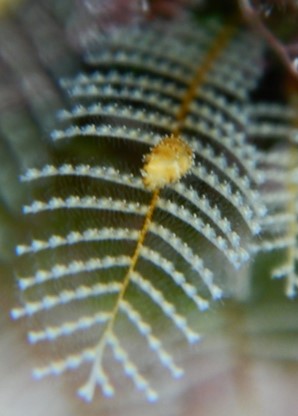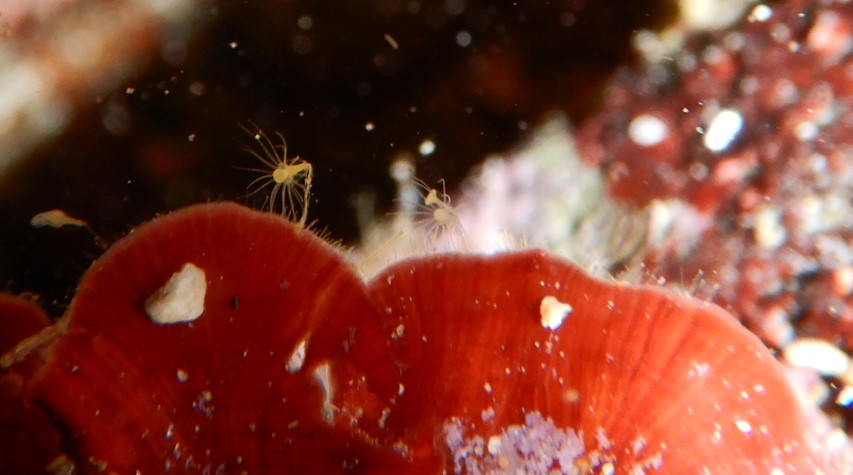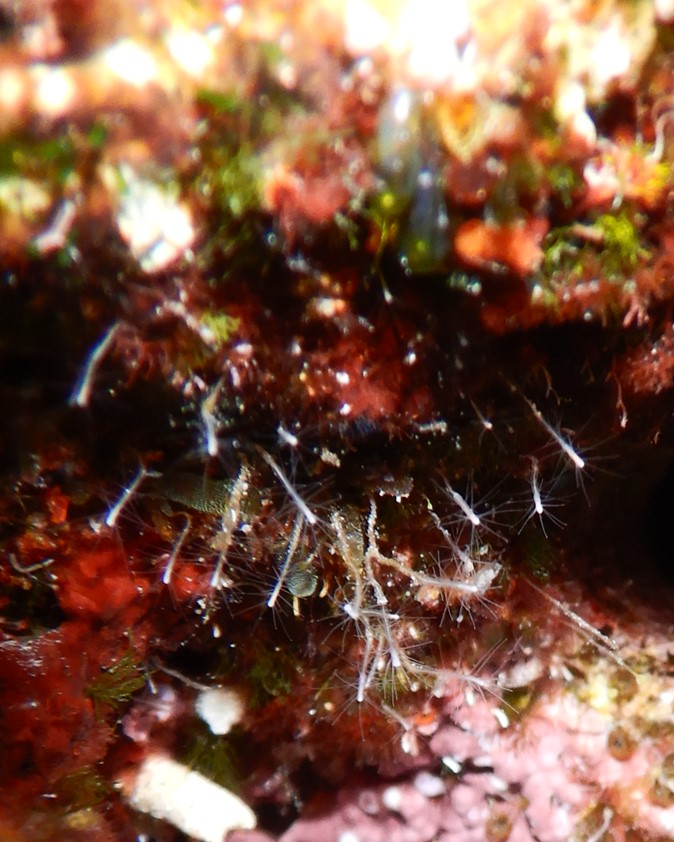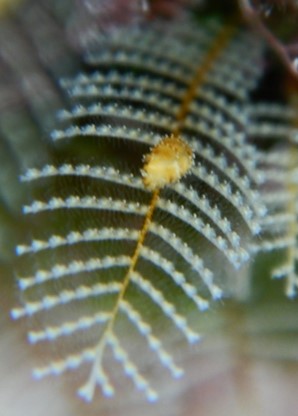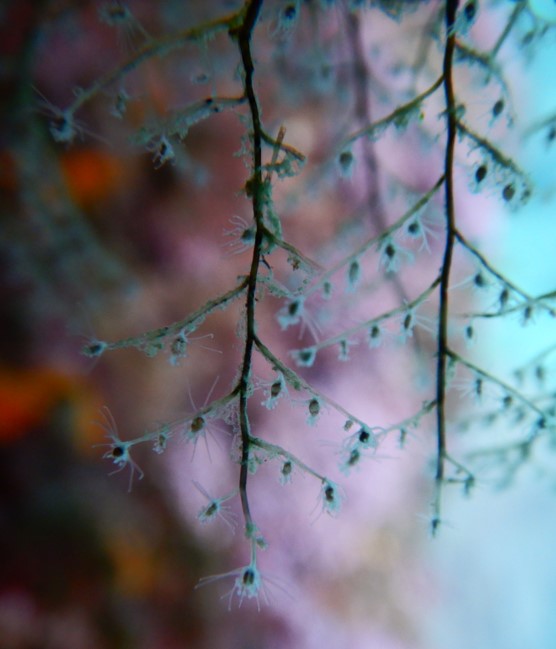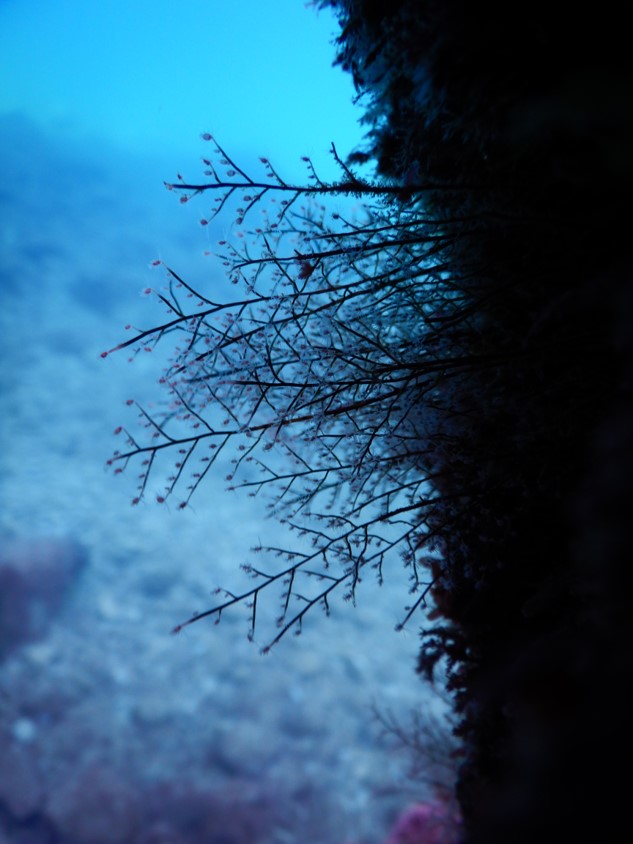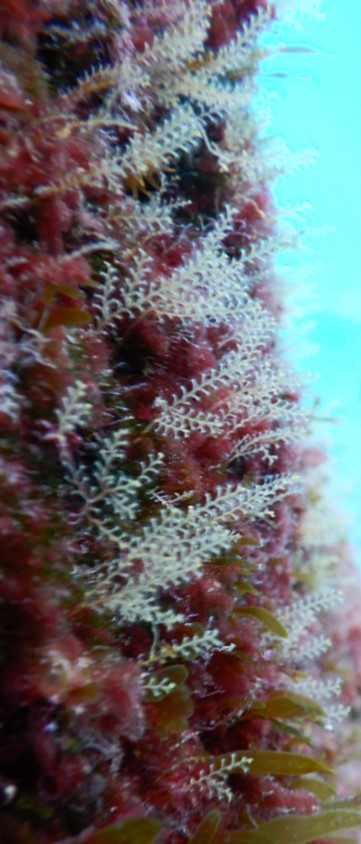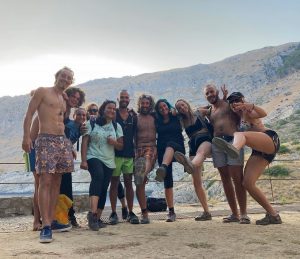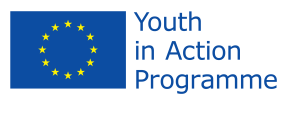Hydrozoa
Hydrozoa includes around 3,700 species, which are primarily colonial organisms. They have a generally tiny size with a plant-like appearance. Colonies typically consist of two types of polyps: gastrozooid, which functions is capturing food and feeding the colony, and gonangium, which is specialized for reproduction. Certain species have developed additional types of polyps for other functions like defense and motion.
Common name:
Description:
Distribution:
Ieranto: Small bay in shaddy places.
Fun Fact:
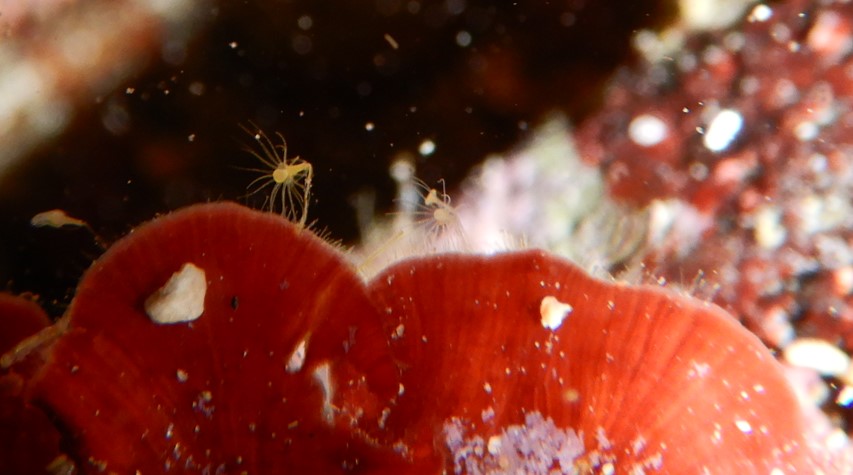
Common name:
Description:
Distribution:
Ieranto: Really difficult to find!
Fun Fact:
Common name: Feather hydroid
Description: Large colonies and can be as tall as 30 cm. Usually seen as dark brown or black, with the end polyps appearing as white. Attached to hard surfaces such as reefs, or in harbors.
Distribution: Atlantic Ocean, Caribbean, Mediterranean and Indo-Pacific.
Ieranto: Can be seen in shaddy places.
Fun fact: It feeds on plankton that drift by.
Common name: Fern Hydroid
Description: This family resembles a plant, as it grows on hard substrates such as boulders and coral rubble. Usually, each “stem” is 10-15 cm long with spaced out branches that resemble fern branches. When observed, it is usually a bright orange.
Distribution: Mediterranean sea.
Ieranto: Difficult to find!
Fun fact: In Ieranto they look like a bright green/yellow.
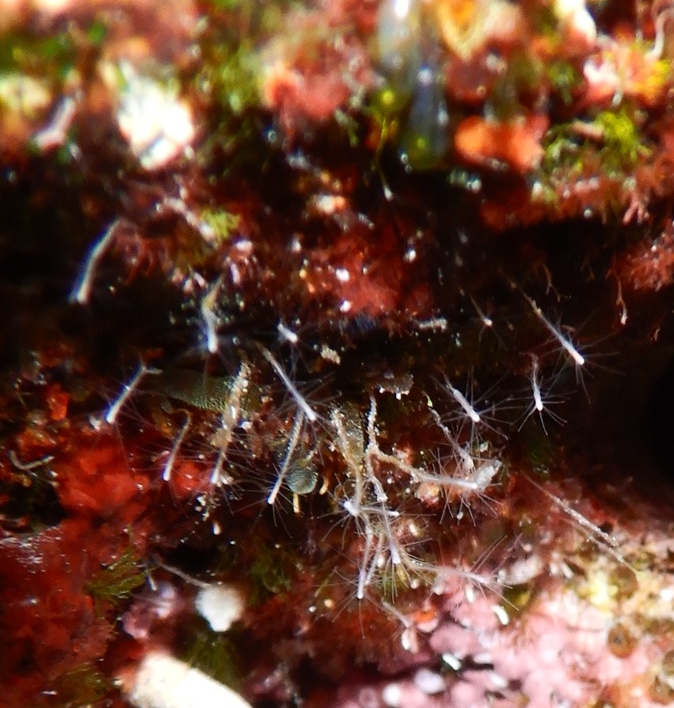
Common name:
Description:
Distribution:
Ieranto: Difficult to find!
Fun fact:




